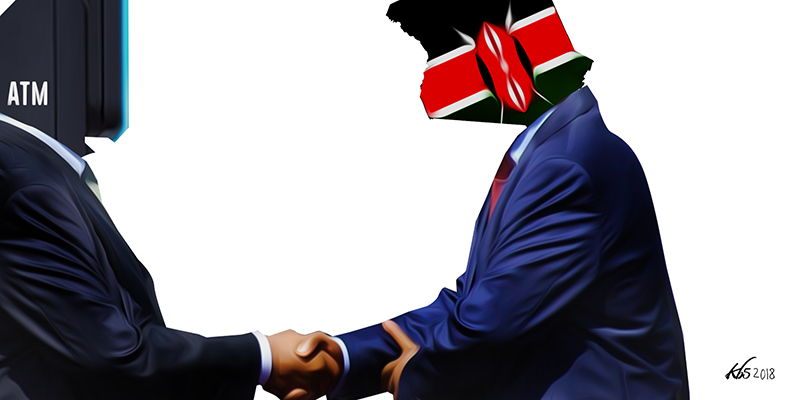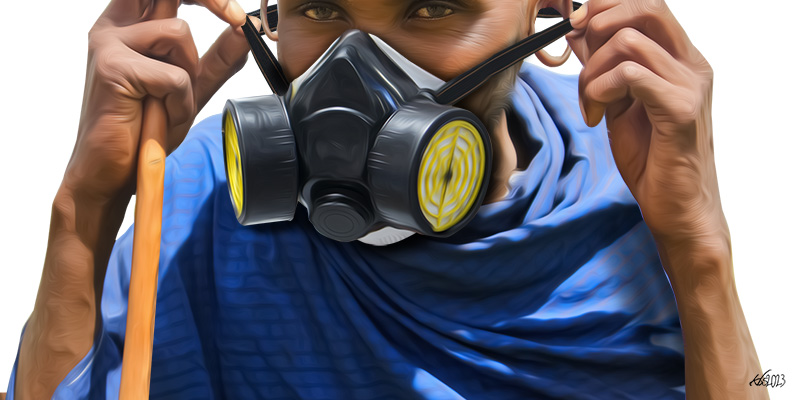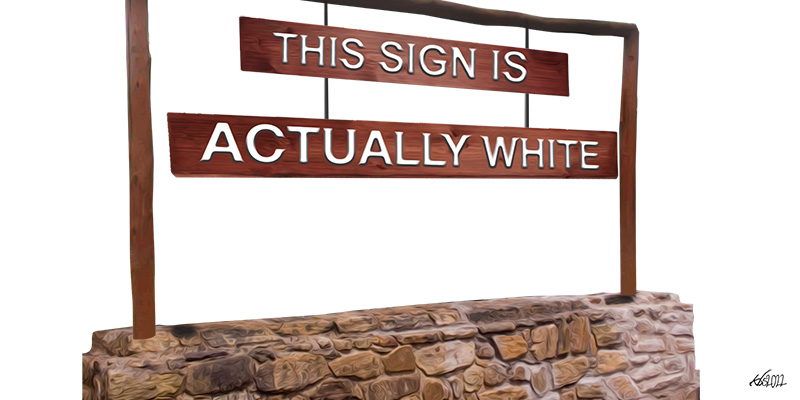The recent anti-IMF crusade certainly made the point that people are fed up with the current administration’s economic management. Kenyans On Twitter (KOT) can be a force, and quite often a useful one, especially when dealing with narrowly defined issues that their intended target – a corporate, or a government organisation – can easily address. Why the International Monetary Fund authorised another loan to Kenya, however, is a far more complex issue.
The following is a brief and hopefully accessible attempt at an explanation of the basics of how the IMF works. An important disclaimer: This article is not about the IMF’s specific policy preferences.
Not an Ordinary Lender
The Fund has three main functions: Monitoring global economic risks, Advising members on the management of their economy, and acting as a lender of last resort.
The third function is the context for their most recent Kenya loan. This is crucial to understand: recourse to the IMF is almost always a last resort. Unlike commercial lenders or development banks, the IMF does not lend for specific projects or programmes. Nobody goes to the IMF to build a new railway or to buy mobile clinics (by which I mean barely modified shipping containers supplied by a company with no track record in medical equipment). You do so when you face a crisis and have few other options. At that point, you will by default have to make some difficult choices.
Kenya’s economy has been hit by the economic fallout from the pandemic which has reduced demand for Kenyan products and services abroad and slowed down Kenya’s economy domestically. At the same time, there is need for more government spending to address the crisis. This is not unique to Kenya. It is a global challenge.
However, while covid has certainly made Kenya’s economic challenges more difficult, it is not the only, or even the primary, reason for the current crisis, and for seeking IMF assistance. Even before the pandemic, the current administration had already created a situation in which it had few to no reserves left to deal with a crisis.
Revenue collection had been behind (clearly unrealistic) targets for years, leading to persistent large fiscal deficits that needed to be financed. This also indicates that budget planning had serious flaws. Furthermore, the rapid increase in debt, at commercial terms, often for white-elephant projects with inadequate-to-no returns, has required a larger percentage of the already scarce revenues to be diverted to debt service. Several observers, including David Ndii, have warned of this for years.
Covid exacerbated but did not cause Kenya’s problems. The reasons why the country is in the unsustainable situation of having to borrow to finance recurrent expenditures and service debt is of GOK’s making and would likely have led to a crisis even without Covid.
In short, what the IMF is offering is a crisis loan, and another loan for another white elephant. The current loan facility is intended to strengthen Kenya’s forex holdings and ensure that the government can continue meeting its payment obligations.
These are not minor reasons: If a country runs out of hard currency, trade will grind to a halt. Not everything can be simply replaced with local production. If GOK cannot pay its employees, this will have a ripple effect through a large number of families, and to the people and companies they typically buy from. As a crisis measure, the IMF loan is effectively the least-worst response.
Covid exacerbated but did not cause Kenya’s problems. The reasons why the country is in the unsustainable situation of having to borrow to finance recurrent expenditures and service debt is of GOK’s making and would likely have led to a crisis even without Covid.
It will also allow GOK to borrow more. Is this ideal? Certainly not. But there are few alternatives at the moment. At least in the short term, you should hope that Treasury will use the cheaper IMF money and the new borrowings enabled by it, to retire more expensive debt and meet its other current obligations.
In the medium to longer term, you should hope that Treasury pursues what is typically referred to as fiscal consolidation: to ensure that planned spending is more in line with revenue collection; that revenue collection is forecast more accurately; that less money is lost to corruption; and that GOK borrows sensibly.
What the IMF Doesn’t Do
Making the IMF the bogeyman is problematic for several reasons. To begin with, it reduces the agency that Kenya and its citizens have, however imperfect. The misguided focus on the IMF lets off the hook the actors who are actually responsible for the current situation, and obscures paths that people can take to fix it.
Rasna Warah’s recent op-ed on The Elephant, SAPs – Season Two: Why Kenyans Fear Another IMF Loan, repeats a lot of that misinformation.
She bases her arguments on two dated and widely discredited works: the disputed ‘Economic Hitman’ who tells tales of the 70s; and Naomi Klein, not an economist, and who has gone on to new recent fame as a conspiracy theorist and is generally not respected for the soundness of her research.
The Structural Adjustment Programmes (SAPs) were painful for a large number of people but invoking them is lazy without the acknowledgement of the historical background. SAPs, too, were imposed after countries had hit a balance of payments crisis (i.e. had run out of hard currency). They were used in the 1980s and 1990s, i.e. decades ago, in different economic and political circumstances, during the Cold War. And even the IMF has some learning capacity. Subsequent instruments were modified to, for example, protect spending on social safety nets or redirect public expenditures towards areas that focus on the poor.
What the IMF is offering is a crisis loan, and another loan for another white elephant. The current loan facility is intended to strengthen Kenya’s forex holdings and ensure that the government can continue meeting its payment obligations
Then there is this hodgepodge of allegations: ‘Sometimes the IMF will create a pseudo-crisis in a country to force it to obtain an IMF bailout loan. Or, through carefully manipulated data, it will make the country look economically healthy so that it feels secure about applying for more loans. When that country can’t pay back the loans, which often happens, the IMF inflicts even more austerity measures (also known as ‘conditionalities’) on it, which lead to even more poverty and inequality.”
The IMF cannot create a crisis. It monitors economic developments and reviews member countries’ economies regularly in consultation with them. The results of these reviews are written up in the report on the Article IV consultations – so called because they are required by Article IV of the IMF’s Articles of Agreement. You can find them under each country on their website.
The IMF also doesn’t ‘carefully manipulate data’. They use the member country’s data and indicate the sources. In Kenya’s case, they were published by the Central Bank, Treasury, and the Kenya National Bureau of Standards. The Fund may disagree with the member country on the forecast (GOK, for example, often tends to be a bit more optimistic regarding GDP growth) but you can check the following year to see who was more accurate. This is also something that ratings and research firms do – take the data that a country publishes, feed them into their model and add their assessment to determine a country’s creditworthiness.
As mentioned, the IMF is a lender of last resort, so the loans that may drive a country into a debt crisis did not come from the Fund – it was all the borrowing elsewhere that created this situation. As a lender of last resort, the IMF also does not lend for infrastructure.
The IMF also does not need to ‘bring Kenya back into the fold’ because Kenya is a member country, and remains so. In 2017, the IMF suspended Kenya’s access to an emergency overdraft facility because Kenya did not pass the first review of the underlying agreements for this facility. This was leaked to the press in early 2018, just before the eurobond – the IMF had likely kept this quiet to not be accused of interfering in the election. Although Kenya failed the scheduled second and third review as well, lending resumed in 2020 with a loan to help address the pandemic’s impact.
The IMF cannot create a crisis. It monitors economic developments and reviews member countries’ economies regularly in consultation with them.
This bit is also not quite correct: “When he took office in 2002, President Mwai Kibaki kept the World Bank and the IMF at arm’s length, preferring to take no-strings-attached infrastructure loans from China”. Kibaki consolidated public finances that he inherited from Moi, and was far more cautious about borrowing in general, and about borrowing on commercial terms. This was reversed under the current administration. Under Uhuru Kenyatta, ironically once Kibaki’s Finance Minister, the percentage of concessionary loans fell, and the percentage of commercial loans, especially from China, shot up.
None of the above is secret information. The Institute of Economic Affairs (IEA) is a useful resource to understand debt and fiscal data, and people like David Ndii have written about debt and fiscal trends, and the build up of risk, for years.
Or you could go to the bogeyman directly:
Out of 196 countries, only seven are not members, so the IMF sits on a treasure trove of data and research. The IMF’s website is a useful resource if you are interested in economic analysis, either generally or for a specific project (or to comment on IMF’s loan facility to Kenya). If you are not an economist, it will take a bit of practice using the IMF website: It is very technical, and IMF staffers write much like central bankers, i.e. their style is very dry and anodyne (It can take a while to figure out that when they say something is ‘not ideal’, that means it is really rather bad). You may need to look up some terminology, and it also helps to look up the specific instruments that the IMF uses.
Kenya’s most recent Article IV report, i.e. the write up of the discussion of the state of the economy, is here. You can read through the IMF’s agreed programme with Kenya here. If you want to talk about ‘structural adjustment’, you should take note of the details of what the IMF and the Kenyan government have agreed. There is no need to speculate because this information sits right there, in public view.
What About Conditionalities?
Because the IMF is a lender of last resort and steps in when a country faces a crisis, the loan is typically accompanied by an agreement between the Fund and the member country on what the government should do immediately and with respect to structural changes to prevent the crisis from recurring.
This is a little like sitting down your drunk uncle and demanding some tangible changes after you’ve bailed him out time and time again so that his kids can stay in school. Except in this case the drunk uncle is a sovereign government that was – and I’m going out on limb here, given the problems with election governance – elected by the people to carry out their business on their behalf. This makes things a lot more complicated.
Because the IMF is dealing with a sovereign, elected government, it cannot take over the running of the country’s affairs (aside from the fact that this would not be practical for an organisation that serves most countries around the globe). Handing over to the IMF would invalidate the voters’ right to choose their representatives.
Because the IMF is a lender of last resort and steps in when a country faces a crisis, the loan is typically accompanied by an agreement between the Fund and the member country on what the government should do immediately and with respect to structural changes to prevent the crisis from recurring.
As the country is already in a crisis, there will necessarily be hard choices in the short term. Since the SAPs, agreements between the IMF and the borrowing countries usually include explicit clauses to ensure social protection, i.e. to ring fence money for healthcare and social safety networks so that cuts in spending have to be made elsewhere, or to continue investing in areas that would benefit the poorer demographics. This is also included in Kenya’s most recent agreement.
But in this, the IMF has to rely on the recipient country to adhere to the agreement since the Fund does not sit in Treasury approving GOK expenditure. If your country’s overall governance is weak – with, for example, an estimated 30 percent of the budget being stolen every year through dodgy contracting that enriches the rich instead of improving services for the general population – the IMF cannot fix this overnight. Rolling back corruption takes time, and is incredibly difficult, even if there is political will, which you can justifiably doubt. An increase in, for example, fuel taxes is considerably more immediate and achievable, which is important in a fiscal crisis.
In Kenya, that previously translated to the government ending a VAT exemption on fuel. This has a far-reaching impact that affected poor people more than the wealthy, and the resultant public protests led to a halfway solution of reducing the VAT to 8%, achieved through parliament. The important takeaway is that it is GoK that dug Kenyans into this hole, and limited the options for getting them out, not the IMF.
In the end, it is up to Kenyans to hold their government accountable for this and the hardships it created. There is only so much the IMF can do, beyond suspending access to the loan or overdraft facility if the country is too lax in implementing agreed measures, including “safeguarding resources to protect vulnerable groups”. As a lender of last resort, its main purpose is to provide support for short term stabilisation, with which a turnaround can be planned.
Further, not borrowing from the IMF, as a loud segment of KOT has demanded, would not prevent the pain of adjustment, and it might make it more severe, e.g. through international trade disruptions, and more government defaults on domestic payments.
So who should Kenyans shout at?
The people they elected to manage the financial and other affairs of this country.
This includes MPs and other legislators. A big part of their job is to check the executive, including what the executive proposes during budget planning. It isn’t to go along with whatever nonsense is proposed, whether in the budget, or in a supplementary budget, or with respect to yet another increase of the debt ceiling, and to wait for “incentives” to vote them through. This is especially relevant for those measures agreed with the IMF.
Kenyans should also consider, and demand accountability for, how the ruling classes’ political shenanigans, such as the Building Bridges Initiative, affect public finances (referenda don’t come cheap).
Finally, they should focus their outrage and pressure on the lenders who continue to finance GOK’s profligacy and its particularly problematic projects, rather than on the institution helping to clean up the mess.








